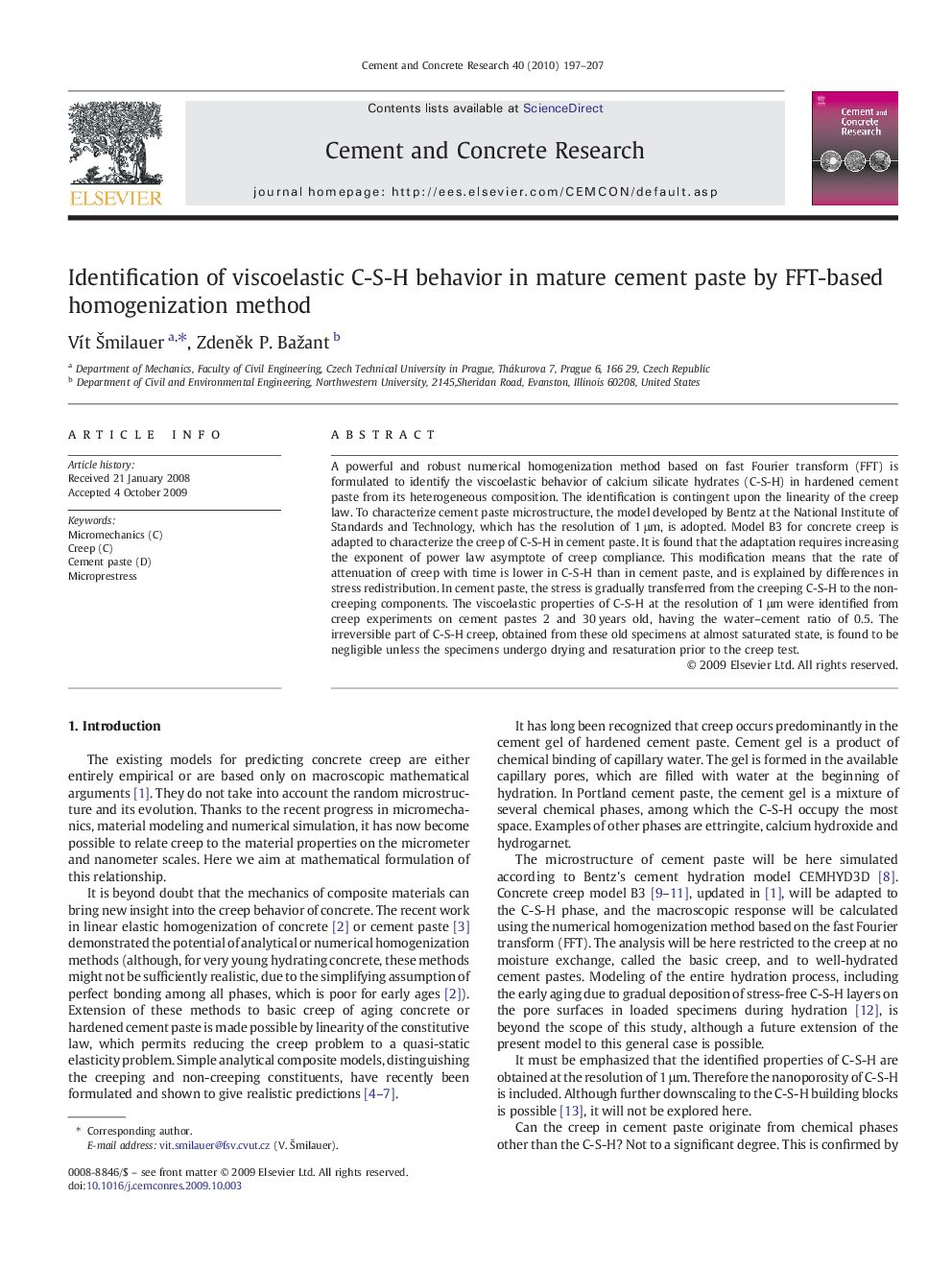| Article ID | Journal | Published Year | Pages | File Type |
|---|---|---|---|---|
| 1457158 | Cement and Concrete Research | 2010 | 11 Pages |
A powerful and robust numerical homogenization method based on fast Fourier transform (FFT) is formulated to identify the viscoelastic behavior of calcium silicate hydrates (C-S-H) in hardened cement paste from its heterogeneous composition. The identification is contingent upon the linearity of the creep law. To characterize cement paste microstructure, the model developed by Bentz at the National Institute of Standards and Technology, which has the resolution of 1 μm, is adopted. Model B3 for concrete creep is adapted to characterize the creep of C-S-H in cement paste. It is found that the adaptation requires increasing the exponent of power law asymptote of creep compliance. This modification means that the rate of attenuation of creep with time is lower in C-S-H than in cement paste, and is explained by differences in stress redistribution. In cement paste, the stress is gradually transferred from the creeping C-S-H to the non-creeping components. The viscoelastic properties of C-S-H at the resolution of 1 μm were identified from creep experiments on cement pastes 2 and 30 years old, having the water–cement ratio of 0.5. The irreversible part of C-S-H creep, obtained from these old specimens at almost saturated state, is found to be negligible unless the specimens undergo drying and resaturation prior to the creep test.
